2011.10.01 09:35
Did deconstruction turn into blobitecture some time in the 90's?

"freedom from both recognized typology and recognized construction industry standards / techniques."
"...heed Tafuri's warning that "once the 'form is made free', the geometric universe becomes an uncontrollable 'adventure." (see Tafuri's "European Graffiti." Five x Five = Twenty-five, 1976)
2011.10.11 08:36
Did deconstruction turn into blobitecture some time in the 90's?
Personally, I find architecture's continual / simultaneous diversity of directions fascinating. If you look at architecture on a global scale and throughout history, there's never been just one direction at any given time, rather many simultaneities.
Deconstructivism did not stop where Blobitecture began. Right now, Blobitecture and Deconstructivism are still sharing a simultaneity along with a fairly wide range of other types of architecture.
2011.12.06 21:36
Frank Gehry
2008.08.23 21:06
peter's canon
Personally, I like seeing all the study models of various projects by various architects. I like it because it clearly demonstrates just how pliant architectural designing can be. And I seriously consider the notion that it may well be Gehry that best introduced architectonic pliancy to the profession.
Is architectonic pliancy in somewhat sharp contrast to Eisenman's method? Up to a certain point (in time) I'd say yes. And when Eisenman's work started exhibiting some measure of pliancy, that's where I start to see Gehry's influence.
Have Gehry's designs of late become somewhat predictable and/or seemingly uninspired? Perhaps the pliability metaphor applies here too; perhaps the pliancy has been lost for being stretched too much and too far.
----------
pliant 1 : yielding readily without breaking : bending or folding easily
About a month ago, I purchased Constructing a New Aganda: Architectural Theory 1993-2009. The first essay in the book is "Architectural Curvilinearity: The Folded, the Pliant, and the Supple" (1993) by Greg Lynn. Upon seeing this title I immediately thought of the post above. I have little doubt that it was a long ago reading of this essay (as I used to own several books by Lynn, although now all sold off at eBay around 8 years ago) that lodged the connection of Gehry's architecture and pliancy somewhere in my brain. With the 2008 post, however, I was thinking more along the lines of the pliacy demonstrated by the plan of Gehry's Wagner House (1978)
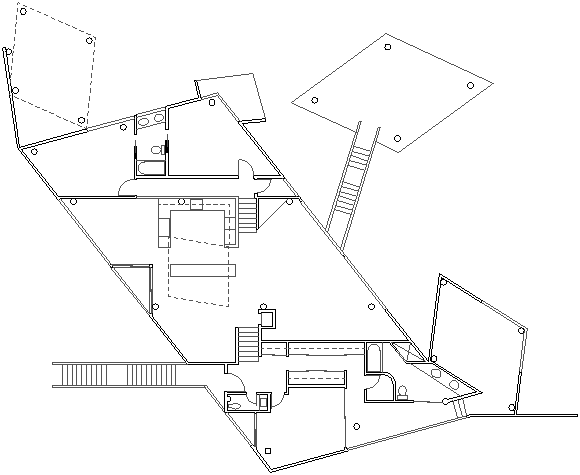
and the 3-dimensional execution of this plan as well. I have also wondered if the peeling wall detail of a 1970-4 Venturi and Rauch project is percursor to Gehry's pliancy.

| |
2012.03.26 11:20
Response to Donna, re: Traditional Architecture
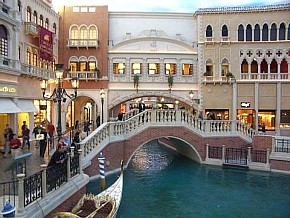
I guess the irony here is that pandering to the public is indeed one of the ways to make lots of money these days.
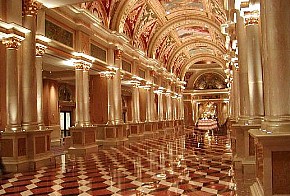
Then again, 'how to make lots of money' isn't one of the things taught in architecture school, is it?
2012.03.29 14:47
Response to Donna, re: Traditional Architecture
If ours is "an era of decadent, mass-produced, Orwellian mendacity about everything our culture is or aspires to be," then isn't that what our architecture should reflect?
2012.04.16 14:36
Why are we having this conversation?
I like it when substance and self-promotion are the same thing because that frightens [critics] more than anything.
2012.05.06 18:08
Help with Thesis: Memory and Urbanism
Sounds like you're headed toward Random Access Memory and Urbanism.
| |
2012.05.22 09:41
the ethics of parametricism/emergent architectural thought and reification
Let me add another facet (writing here on the fly, so it may not be all too coherent). Besides the mimicry of a myth (so to speak), is not the whole process of getting the 'code' just the way you want it--the continual tests and retests--also something like an inverted (if you will) form of mimicry: "I know what I want it to look like; I just have to find the right parameters." Or, put in a way (hopefully) like above: "I know what nature I want it to look like, but I still have to figure out the right numbers."
In the little bit of parametrics I've dabbled with, using very old (1996) software, I found that using "numbers" that were outside the 'expected' parameters resulted in the most 'novel' results.
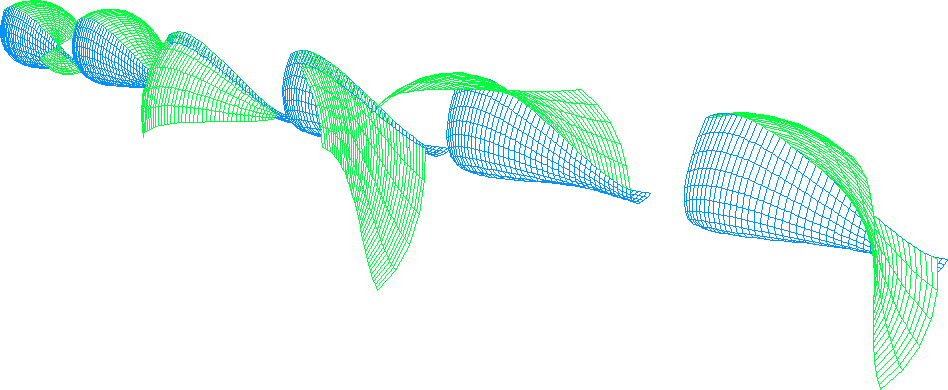
A very early example of the 'playing', 2000.
Does it still just boil down to a sophisticated play of/with geometry?
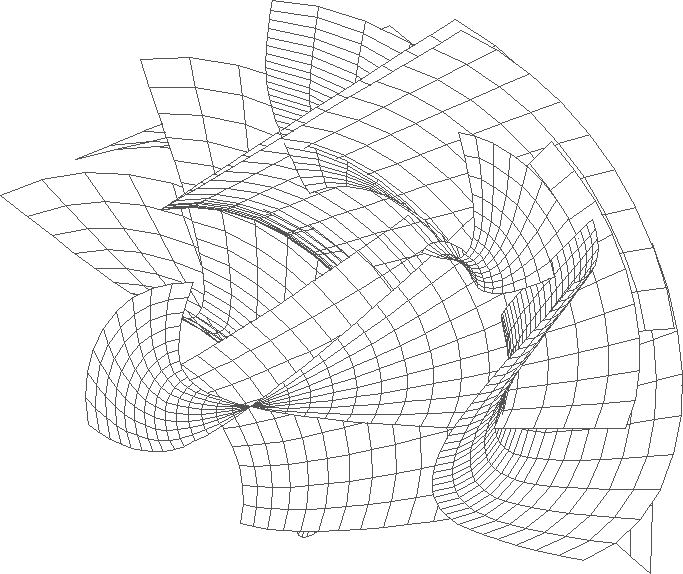
And adding the 'unexpected' thinking, imagine the image above as the 2-dimentional 'grid' plan of a city. It's like actually stepping out of the mimicry.
|